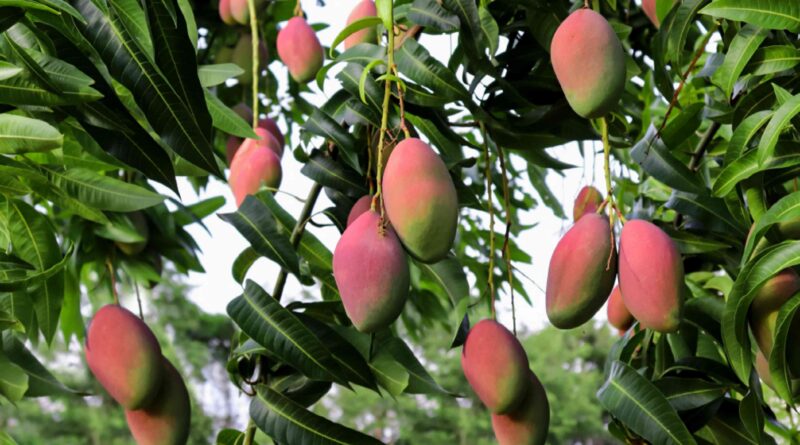A Detailed Guide on Cultivation of Mangoes in India
Mangoes, also known by the name “King of Fruits”, are always in high demand during the summer season. The fruit is known for its sweet, tangy and juicy fruit flavour. This Fruit cultivation requires fertile soil, a suitable climate and proper care during the planting cycle. There are a series of steps that need to be followed, from picking the correct variety to post-harvesting. Moreover, it has made a lot of contributions to the local economy and is one of the farmers’ preferred crops. In this guide, you will learn about all the information related to mango cultivation.
Complete Steps For Mango Harvesting
Before farming, you must have all the basic information. Go through all the given details to learn about the complete steps for mango harvesting:
1. Site Selection and Soil Preparation
Mango trees grow well in humid and warm climates. Its trees need to be planted in warm temperatures and are not resistant to frost. Therefore, they should be planted in regions that have temperatures of 24°C to 30°C. Mangoes also require well-drained sandy loam soils with a pH between 5.5 and 7.5. One of the excellent choices for soil preparation is the Solis Tractor, which can be equipped with several implements for better production. It’s important to prepare the soil properly before planting mango trees:
- Land Preparation: Clear the field of weeds, stones, and unwanted material. Plough and till the ground to crumble the soil and increase aeration for the benefit of root growth.
- Soil Testing: Test the soil for ideal pH and nutrient levels. Mangoes prefer slightly acidic to neutral soil but well-draining soil in order to prevent waterlogging.
- Fertilization: Place organic matter or compost on the ground to enrich its fertility. You can further add phosphorus and potassium fertilizers to improve root and fruit development.
2. Choosing the Right Mango Variety
Mangoes consist of several varieties, each of which possesses flavours, sizes, and uses. Variety selection based on climate, soil, and market demand is the first step to successful mango farming. Some of the famous varieties are Alphonso, Kesar, Haden and Tommy Atkins.
3. Mango Tree Planting
Mango trees are normally reproduced from seeds or by vegetative means like budding or grafting. Plants from grafting start to produce earlier and yield better results than the ones grown from seeds.
- Grafting: It is the most common method used in commercial mango production. The method involves the joining of a scion onto a rockstock. After that, the trees start producing fruits at an earlier stage, typically within 3-4 years. On the other hand, seed-grown trees usually take around 6-8 years to grow.
- Planting Spacing: Plant the trees, maintaining a space of 10 to 12 meters as it gives sufficient space to grow. This is necessary for sunlight, proper air growth and healthy development.
4. Watering and Irrigation
Mango trees are drought-resistant but require frequent watering during their early years and while flowering and fruiting. Overwatering, however, results in root rot and other pathogens. The ideal irrigation system for this fruit farming is drip irrigation. This technique brings water right down to the root level without wetting the leaves.
5. Pruning and Training
Pruning is a key activity in maintaining a healthy mango tree and maximizing fruiting. The process helps on a regular basis, such as:
- Remove dead, damaged, or infected branches.
- Control the overall size of the tree and make it easier to manage.
- Facilitate better air circulation and penetration of light into all parts of the tree, enabling uniform fruiting.
6. Pest and Disease Management
Mango trees are susceptible to several pests and diseases that can affect the fruit as well as the tree’s health. Some of the most common mango pests include Fruit flies, Aphids and Leafhoppers. Furthermore, to prevent pests and diseases, regularly inspect your mango trees, prune infested fruits or leaves, and apply organic or chemical treatments as needed.
7. Fertilization
Mango trees should be properly nourished for growth and optimal fruiting. Make sure to feed the tree regularly. Organic fertilizers like compost or rotten manure should be used, as they will provide the required nutrients. Similarly, you can use chemical fertilizers with the same amounts of nitrogen, phosphorus, and potassium to promote root growth, flowering, and fruit growth.
8. Mango Harvesting
Mangoes generally mature between 3-5 months after flowering, varying with the type. Harvest should be in the early morning or late evening when temperatures are low to prevent heat damage to the fruit. Additionally, there are a few indications that the fruit is ready to be picked, such as a change of colour, softening and a Fruity odour.
9. Post-Harvest Care
After the harvestation process, handle the mangoes very carefully, or they will be bruised. Make sure to keep the fruit in a cold and dry place. To sell the mangoes, you need to sort, wash and pack them. Some of the types have short life spans, while others, like Tommy Atkin, can be exported as they take longer to spoil. If you have a large farm, then Kubota Tractor are highly recommended as they have high lifting capacity and are very useful for transport.
Conclusion
In the end, when the cultivation of mangoes is precise and has the right climatic conditions, then it can be really profitable for the farmers. The quality of the fruit mostly depends on the variety, soil preparation, irrigation system and pest management. If you follow the correct practice for harvesting and take proper measures, then be ready to enjoy the rich returns.




